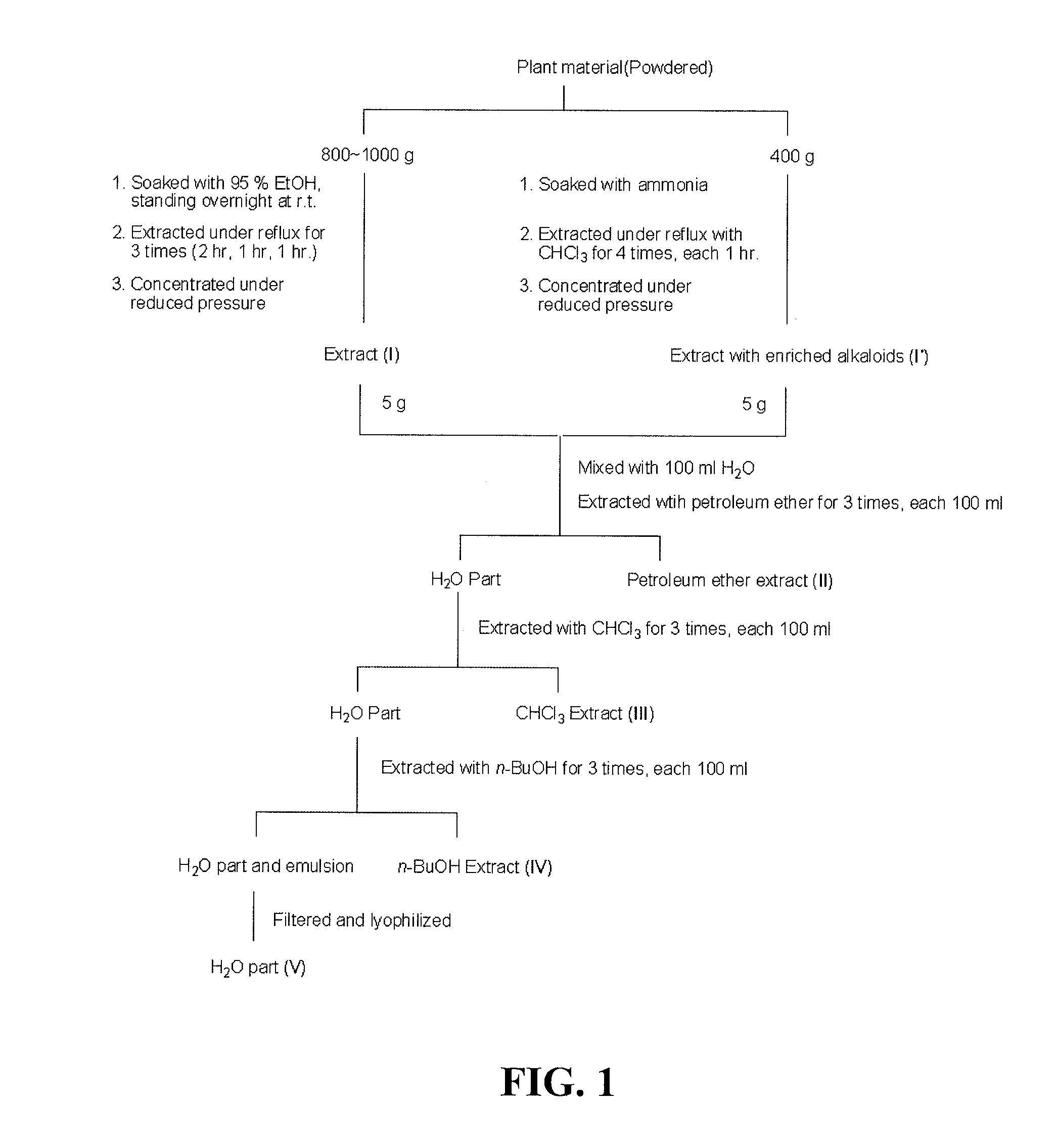Topical skin formulations comprising plant extracts
a technology of plant extracts and skin formulations, applied in the directions of plant/algae/fungi/lichens, biocide, drug compositions, etc., can solve the problems of skin irritation, physical properties, or physiological functions of skin that are considered visually undesirable, and have various drawbacks, so as to prevent skin conditions, increase the stratum corneum turnover rate of the skin, and increase collagen synthesis in fibroblasts
- Summary
- Abstract
- Description
- Claims
- Application Information
AI Technical Summary
Benefits of technology
Problems solved by technology
Method used
Image
Examples
example 1
Materials and Methods for Obtaining Extracts
[0145]The extracts identified in Tables 1-3 were prepared from the whole plant. Each plant was individually obtained, ground, and dried, to produce a powder. The powder was treated according to the process described in FIG. 1. Each extract in Tables 1-3 was prepared by and provided to the inventors by Kunming Institute of Botany, Chinese Academy of Sciences, Yunnan, CHINA.
example 2
Efficacy of Extracts
[0146]Each extract prepared according to the process described in Example 1 was subjected to a variety of assays to determine their skin efficacy. The following Tables 1-3 provide a summary of these data. A description of the assays used to obtain these data is provided below Table 3.
TABLE 1*Anti OxidantTyrosinaseElastaseTNF-αLOCOXMMP 1MMP 3Extract**ActivityActivityActivityActivityActivityActivityActivityActivityLoropetalum chinensisEFFECTEFFECTEFFECTEFFECTTrema angustifoliaEFFECTEFFECTEFFECTGlochidion lanceolarisEFFECTEFFECTEFFECTEFFECTEFFECT*“EFFECT” means that the given extract had a measurable effect on the corresponding activity being assayed, which is indicative of beneficial results when applied to skin.**These data suggest that a combination of such extracts can be used in a product to produce a multi-functional product. Alternatively, the extracts can be used individually, which still can result in a product having multiple benefits.
TABLE 2*Anti OxidantT...
example 3
Testing Vehicles and Sample Compositions
[0161]Tables 4 and 5 describe generic skin testing formulations in which a skin active ingredient can be incorporated into to determine the types of skin benefits that can be attributed to the skin active ingredient. These formulations are prepared in such a manner that any resulting skin benefit from topical application of the formula to skin can be directly attributed to the skin active ingredient being tested. In the context of the present invention, the skin active ingredient that can be tested can be a Ficus tikoua extract, Polygonum hydropiper extract, Pistacia chinensis extract, Zizyphus mauritiana extract, Garuga forrestii extract, Michelia figo extract, Populus davidiana extract, Sabina chinensis extract, Cuphea balsamona extract, Setaria palmifolia extract, Polygonum lapathifolium extract, Artemisia parviflora extract, Camptotheca acuminate extract, Washingtonia filifera extract, Machilus longipedicellata extract, Geranium nepalense ...
PUM
 Login to View More
Login to View More Abstract
Description
Claims
Application Information
 Login to View More
Login to View More - R&D
- Intellectual Property
- Life Sciences
- Materials
- Tech Scout
- Unparalleled Data Quality
- Higher Quality Content
- 60% Fewer Hallucinations
Browse by: Latest US Patents, China's latest patents, Technical Efficacy Thesaurus, Application Domain, Technology Topic, Popular Technical Reports.
© 2025 PatSnap. All rights reserved.Legal|Privacy policy|Modern Slavery Act Transparency Statement|Sitemap|About US| Contact US: help@patsnap.com

